Splash Screen
Chapter Introduction
Section 1: The Peoples of North
America
Section 2: Early Civilizations in
Mesoamerica
Section 3: Early Civilizations in
South America
Visual Summary
Chapter Menu
The sacred city of Chichén Itzá is one of the most important archaeological sites of the Maya and Toltec cultures. El Caracol, the observatory shown in the photo, was used by the Maya and the Toltec to measure the movement of the moon, stars, and planets. It exhibits the advanced engineering and astronomy skills of its builders. In this chapter you will learn about the early civilizations of the Americas.
• Why do you think the Maya and the
Toltec went to such efforts to
understand the movement of the moon,
stars, and planets?
• Why do archaeologists study ancient
ruins today?
Chapter Intro
What can ruins teach us about civilization?
Chapter Intro
Chapter Intro
The Peoples of North America
How does geography influence a people’s way of living?
Chapter Intro 1
Early Civilizations in Mesoamerica
Why might several successive civilizations develop in a certain area?
Chapter Intro 2
Early Civilizations in South America
How does a particular civilization become dominant in a region?
Chapter Intro 3
Chapter Preview-End
The BIG Idea
Physical Geography Hunters and gatherers spread into the North American continent and established their unique ways of living.
Section 1-Main Idea
Content Vocabulary
•
longhouse
• adobe
• clan
• pueblo
•
tepee
Academic Vocabulary
•
• survive
temporary
Section 1-Key Terms
People and Places
•
• Bering Strait
Iroquois
•
Inuit
• Plains Indians
• Gulf of Mexico
• Anasazi
• Hopewell
• Mesa Verde
• Cahokia
Section 1-Key Terms
Do you see any evidence of the early people of North America in your community?
A. Yes
B. No
A. A B. B
0%
0%
Section 1-Polling Question
The First North Americans
Early hunters and gatherers moved across the Bering Strait into North America, later forming distinct cultures.
Section 1
The First North Americans (cont.)
• The first Americans were probably nomadic hunters who crossed the Bering Strait from Asia to follow the herds of animals that were their food source.
• The Inuit lived in the cold, harsh
environment of the tundra region of the arctic. They lived in homes made of stones and turf and temporary shelters called igloos.
Cultures of North America, 400 B.C.–A.D. 1500
Section 1
The First North Americans (cont.)
• Around 1000 B.C., farming communities appeared in the Eastern Woodlands, a region stretching from the Great Lakes to the Gulf of Mexico.
• In the Ohio River Valley, the Hopewell
people grew corn, squash, and beans. They built large, elaborate mounds for ceremonial purposes.
Cultures of North America, 400 B.C.–A.D. 1500
Section 1
The First North Americans (cont.)
• As people shifted to full-time farming, cities began to appear. Cities such as Cahokia had populations containing 10,000 people or more.
• On the eastern seaboard of North America lived the Iroquois people. They lived in villages that consisted of longhouses which could house up to a dozen families.
Cultures of North America, 400 B.C.–A.D. 1500
Section 1
The First North Americans (cont.)
• Iroquois lived in clans. The women of the clans chose male clan members for the Grand Council, a democratic group of representatives that settled differences among the Iroquois.
• On the Great Plains west of the Mississippi
River, the Plains Indians cultivated crops and hunted buffalo.
Section 1
• Buffalo provided meat, tools made from bones, and skins for clothing and shelter in tepees.
The First North Americans (cont.)
• In the Southwest region of North America, the Anasazi established an extensive farming system using irrigation.
• The people lived in pueblos, multistoried
structures made of stone and adobe. Pueblo Bonito was a complex containing 800 rooms for 1,000 people.
Section 1
• In southern Colorado, the Anasazi created a community at Mesa Verde. The settlement at Mesa Verde contained buildings constructed into the walls of the cliff.
Why did nomadic Asians cross the Bering Strait into the Americas?
A. To flee from enemies
B. To settle new lands
C. To escape drought
D. To follow herds of animals
0%
0%
0%
Section 1
A. A B. B C. C 0% D. D
Section 1-End
The BIG Idea
Ideas, Beliefs, and Values Early Mesoamerican civilizations flourished with fully developed political, religious, and social structures.
Section 2-Main Idea
Content Vocabulary
• hieroglyph
•
tribute
Academic Vocabulary
• estimate
• accurate
Section 2-Key Terms
People and Places
• Mesoamerica
• Toltec
• Olmec
• Chichén Itzá
• Teotihuacán
• Aztec
• Yucatán Peninsula
• Tenochtitlán
• Lake Texcoco
• Maya
• Tikal
Section 2-Key Terms
You can learn a lot about a civilization by studying their art and architecture.
A. Agree
B. Disagree
A. A B. B
0%
0%
Section 2-Polling Question
The Olmec
The Olmec, the first Mesoamerican civilization, appeared around 1200 B.C., and the city of Teotihuacán thrived until A.D. 800.
Section 2
The Olmec (cont.)
• Mesoamerica is the area of modern Mexico and Central America where ancient empires once flourished.
• The Olmec are considered the oldest
civilization in Mesoamerica and are known for the colossal stone statuary heads that weighed up to twenty tons.
Section 2
• The Maya people later adopted the Olmec religion, calendar, and numerical system.
The Olmec (cont.)
• The first major city of Mesoamerica was
Teotihuacán. With a population of around 200,000, this city was the capital of an early empire.
• Teotihuacán was a center of trade in
Mesoamerica. It was famous for its obsidian objects and other goods.
Cultures of Mesoamerica, 900 B.C.–A.D. 1500
Section 2
What was the most famous good traded from the city of Teotihuacán?
A. Pottery
B. Obsidian
C. Jewelry
D. Corn
0%
0%
Section 2
A. A B. B C. C 0% 0% D. D
The Maya and the Toltec
The Maya and the Toltec ruled Mesoamerica for nearly nine centuries.
Section 2
The Maya and the Toltec (cont.)
• The Yucatán Peninsula is an area of land that extends from Mesoamerica, separating the Gulf of Mexico from the Caribbean Sea.
• The Maya were one of the most
sophisticated civilizations in the Americas.
• The Maya built spectacular temples and pyramids and developed an accurate calendar.
Cultures of Mesoamerica, 900 B.C.–A.D. 1500
Section 2
The Maya and the Toltec (cont.)
• Maya cities were built around a central
pyramid topped with a temple to the gods. The city of Tikal in present-day Guatemala had a population of more than 100,000.
• To the Maya, all life was in the hands of the
Section 2
gods. Like other civilizations, the Maya practiced human sacrifice.
The Maya and the Toltec (cont.)
• The Maya created a sophisticated writing system based on hieroglyphs. When the Spanish conquerors arrived in the sixteenth century, they destroyed these literary works.
• After the fall of Teotihuacán, the Toltec
Section 2
came to power. The Toltec were a warlike people who ruled from Chichén Itzá for centuries.
The Maya and the Toltec (cont.)
Section 2
• The Toltec thought of their leaders as having a connection to the gods. Their main god was Quetzalcoatl.
What did many of the Maya hieroglyphs record?
A. Events in Maya history
B. Crop production numbers
C. Calendar information
D. Military information
0%
0%
Section 2
A. A B. B C. C 0% 0% D. D
The Aztec
The Aztec ruled Mesoamerica until the arrival of the Spanish in the 1500s.
Section 2
The Aztec (cont.)
• The Aztec came to power in the fourteenth century. They established their capital of Tenochtitlán on a swampy island in Lake Texcoco.
• The Aztec ruled much of what is now Mexico and demanded tribute from the conquered peoples.
• The Aztec state was authoritarian, and the monarch claimed lineage to the gods.
Lake Texococo
Section 2
The Aztec (cont.)
• Aztec religion had a significant influence on
their art and architecture.
• The Aztec believed that the world would end
by earthquakes, and that only human sacrifice could delay this day of reckoning.
• Tenochititlán formed an alliance with two
Section 2
other city-states that enabled it to dominate an empire stretching from the Atlantic Ocean to the Pacific Ocean.
Why did the Aztec settle in the swampy, snake-infested Lake Texcoco?
A. It was a center of trade.
B. It was the site of a
former city.
C. They saw a religious omen.
0%
0%
0%
0%
D. It was loaded with obsidian.
Section 2
A. A B. B C. C D. D
Section 2-End
The BIG Idea
Order and Security The Inca developed a well- organized and militaristic empire with a distinct Inca culture.
Section 3-Main Idea
Content Vocabulary
• maize
• quipu
Academic Vocabulary
•
instructed
•
residents
Section 3-Key Terms
People and Places
•
• Caral
Inca
• Chavin
• Cuzco
• Nazca
• Pachacuti
• Ecuador
• Machu Picchu
• Moche
• Urubamba River
Section 3-Key Terms
Hundreds of years from now, future generations will be able to completely understand our society by studying our artifacts.
A. Agree
B. Disagree
A. A B. B
0%
0%
Section 3-Polling Question
Early Civilizations
The Chavin, Nazca, and Moche cultures existed in South America before the Inca came to power.
Section 3
Early Civilizations (cont.)
• The oldest known city in the Americas is
Caral, in Peru. The city had buildings built out of stone and utilized an intensive irrigation system.
• Around 900 B.C., the Chavin people lived in
the coastal region of western South America. The people built temples and pyramids and declined around 200 B.C.
Cultures of South America, A.D. 700–1530
Section 3
Early Civilizations (cont.)
• The Nazca culture existed around the same
time as the Chavin people.
Section 3
• The Nazca created magnificent pottery and formed geometric shapes in the ground that are so large that they can only be seen from the air.
Early Civilizations (cont.)
• Around A.D. 300 the Moche civilization
developed near the Pacific coast south of Ecuador. The people grew enough maize, peanuts, and cotton to supply the region.
Section 3
• The Moche were a warlike people. As they have left no written history, historians have relied on pottery images to decipher their past.
What is the oldest major city in the Americas?
A. Ecuador
B. Nazca
C. Caral
D. Chan Chan
0%
0%
Section 3
A. A B. B C. C 0% 0% D. D
The Inca
The Inca developed a well-organized, militaristic empire with a highly structured society.
Section 3
The Inca (cont.)
• In the late 1300s, the Inca rose to power under the skilled leadership of Pachacuti.
• The Inca capital Cuzco, was located in the mountains of present-day southern Peru 11,000 feet above sea level.
• The empire extended from what is now
Section 3
Ecuador to central Chile and contained some 12 million inhabitants.
The Inca (cont.)
• Once an area was under Inca control, the local inhabitants were instructed in the Quechua language.
Section 3
• To keep the empire organized, Pachacuti divided the land into provinces that were supposed to contain about 10,000 residents.
The Inca (cont.)
• The empire was connected by an extensive
road system, complete with advanced bridges, rest houses, and storage depots.
• Men and women were expected to select a
Section 3
partner from their own social group.
The Inca (cont.)
• The only profession allowable for women aside from food production and domestic crafts was temple priestess.
• The Inca were the best engineers of the
Section 3
Native Americans. They built roads, bridges, and aqueducts through the mountains.
The Inca (cont.)
• The ruins of the abandoned city of Machu
Pichu demonstrate the architectural genius of the Inca. Built on a lofty hilltop far above the Urubamba River, the city is approximately 8,000 feet above sea level.
Section 3
• The Inca had no writing system but kept records using a system of knotted strings called quipu.
How were the Inca able to farm in the mountains of South America?
A. Slaves carried water
from rivers.
B. They used irrigation
techniques.
C. The build dams.
0%
0%
D. They had an extensive
Section 3
A. A B. B C. C 0% 0% D. D road system.
Section 3-End
The Peoples of NORTH AMERICA
• During the last Ice Age, hunters and gatherers from Asia may have crossed the land bridge in the Bering Strait to North America.
•
In North America these first Americans formed distinct cultures, including Inuit, Mound Builders, Iroquois, Plains Indians, and Anasazi.
VS 1
The Peoples of MESOAMERICA
• The Olmec (c. 1200–400 B.C.) carved
huge stone heads, possibly to represent their gods.
• Teotihuacán (c. 250 B.C.–A.D. 800) was Mesoamerica’s first major city.
• The Maya (c. A.D. 300–900) built
temples and pyramids and developed a calendar.
• The Toltec (c. A.D. 900–1200) introduced metal-working to Mesoamerica.
• The Aztec flourished from the twelfth
century A.D. until the Spanish conquest in the 1500s.
VS 3
The Peoples of SOUTH AMERICA
• Caral, the oldest-known
major city in the Americas, was abandoned by 1500 B.C.
• The Chavin, Nazca, and
Moche cultures existed in South America before the Inca.
• The Inca conquered a large area under their
leader Pachacuti and his successors.
• The Inca created a highly structured society with an extensive road system linking its four quarters.
VS 2
VS-End
Figure 1
Figure 2
Figure 3
Figure 4
Chapter Transparencies Menu
Chapter Transparency
Unit Time Line Transparency
Select a transparency to view.
Chapter Trans Menu
Cause-and-Effect Transparency
Chapter Trans
Unit Timeline Trans
CnETrans
DFS Trans 1
DFS Trans 2
DFS Trans 3
longhouse
Vocab1
Iroquois house about 150 to 200 feet (46 to 61 m) long built of wooden poles covered with sheets of bark and housing about a dozen families
clan
Vocab2
a group of related families
tepee
Vocab3
a circular tent made by stretching buffalo skins over wooden poles
adobe
Vocab4
sun-dried brick
pueblo
Vocab5
a multi-storied structure of the Anasazi that could house up to 250 people
survive
Vocab6
to remain alive or in existence
temporary
Vocab7
lasting for a limited time; not permanent
hieroglyph
Vocab8
a picture or symbol used in a hieroglyphic system of writing
tribute
Vocab9
goods or money paid by conquered peoples to their conquerors
estimate
Vocab10
to make a rough determination of
accurate
Vocab11
exact or right
maize
Vocab12
corn
quipu
Vocab13
a system of knotted strings used by the Inca people for keeping records
instructed
Vocab14
taught or trained
resident
Vocab15
one who resides in a place
To use this Presentation Plus! product:
Click the Forward button to go to the next slide.
Click the Previous button to return to the previous slide.
Click the Home button to return to the Chapter Menu.
Click the Transparency button from the Chapter Menu, Chapter Introduction slides, or Visual Summary slides to access the transparencies that are relevant to this chapter. From within a section, click on this button to access the relevant Daily Focus Skills Transparency.
Click the Return button in a feature to return to the main presentation.
Click the History Online button to access online textbook features.
Click the Reference Atlas button to access the Interactive Reference Atlas.
Click the Exit button or press the Escape key [Esc] to end the slide show.
Click the Help button to access this screen.
Links to Presentation Plus! features such as Maps in Motion, Graphs in Motion, Charts in Motion, Concepts in Motion, and figures from your textbook are located at the bottom of relevant screens.
Help
This slide is intentionally blank.
End of Custom Shows



![Bài giảng Lịch sử thế giới trung đại [mới nhất]](https://cdn.tailieu.vn/images/document/thumbnail/2025/20250506/vinarutobi/135x160/4361746531976.jpg)
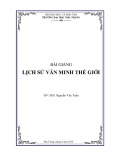
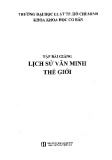

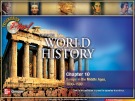
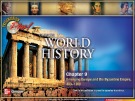
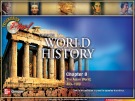
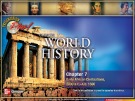
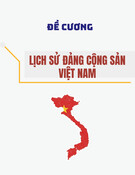
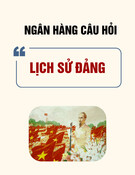




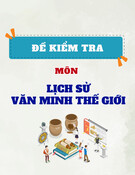


![Giáo trình Tổ chức và Quản lý Hoạt động Văn hóa Thông tin Cơ sở (Ngành Quản lý Văn hóa - Trung cấp) - Trường Trung cấp Mỹ thuật - Văn hóa Bình Dương [Mới nhất]](https://cdn.tailieu.vn/images/document/thumbnail/2025/20251110/kimphuong1001/135x160/17861762748492.jpg)





